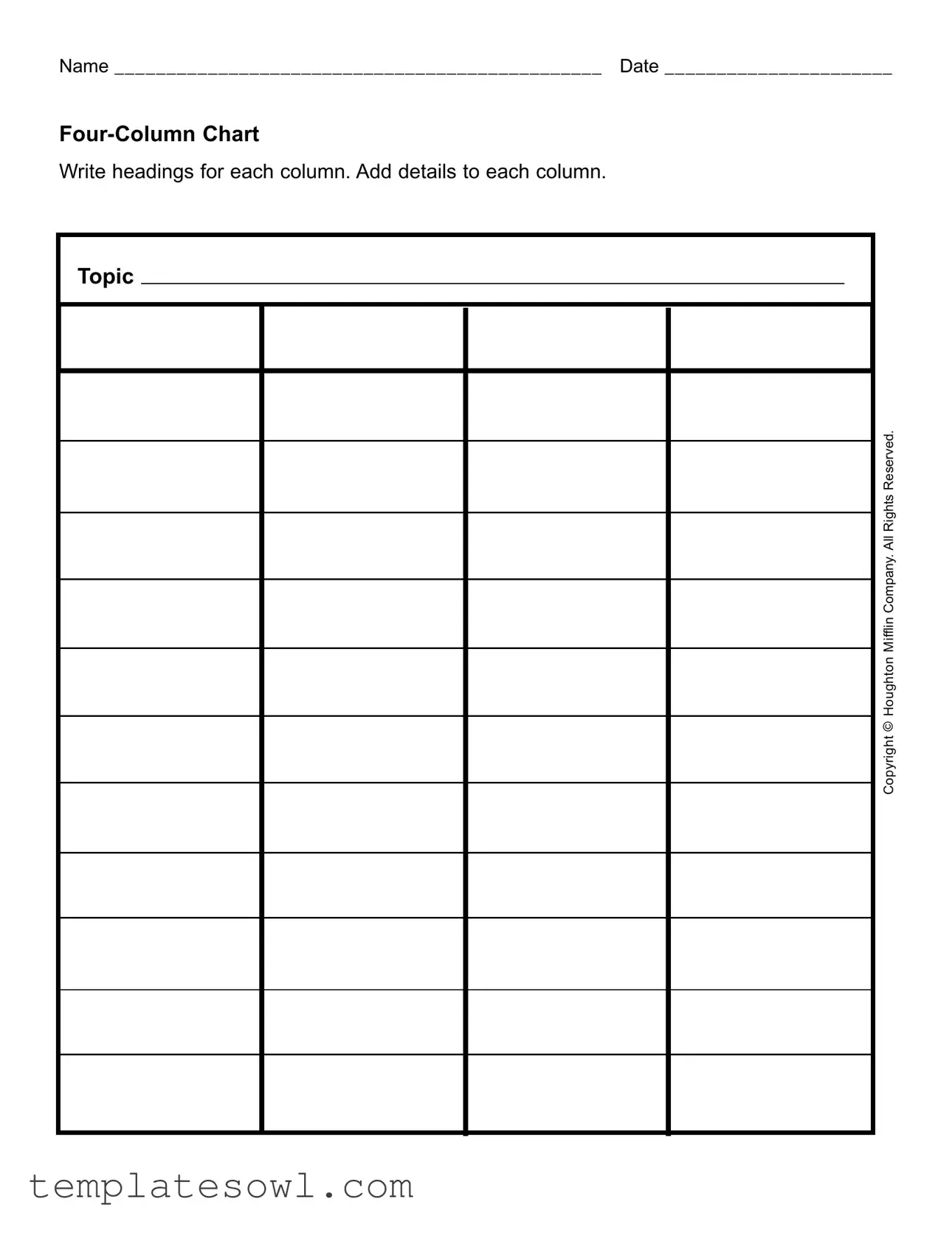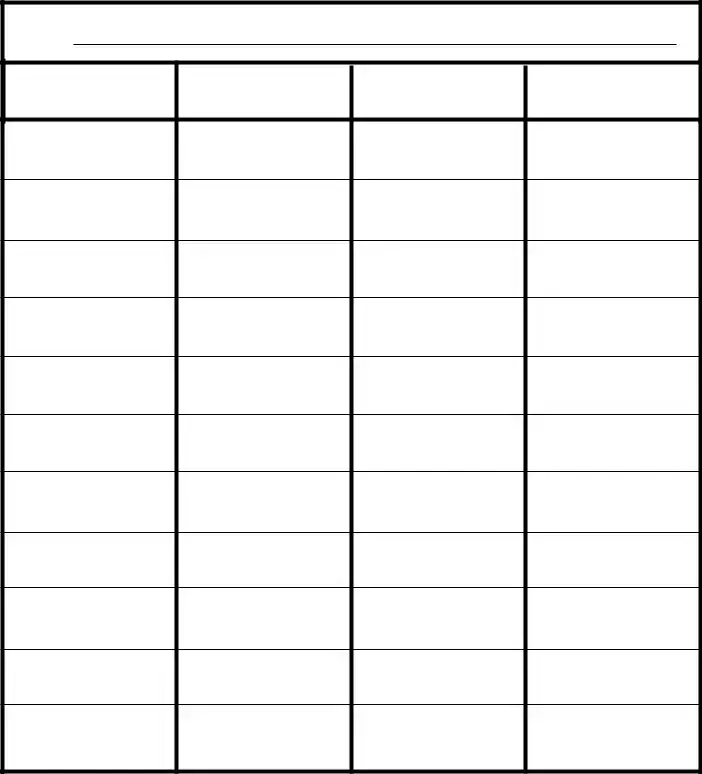Filling out the Four Column Chart form can seem straightforward, but it’s easy to make mistakes that can affect the clarity and usefulness of the document. One common error is neglecting to add appropriate headings for each column. Clear headings are essential because they guide readers and help organize information logically. Without clear headings, the chart may become chaotic and difficult to interpret.
Another frequent mistake is overwhelming the form with excessive details in the columns. While it’s important to provide sufficient information, there’s a fine line between thoroughness and clutter. Too much information can obscure the main points you want to convey. Aim for concise yet informative details that will capture the essence of the topic.
A logical flow of information is crucial in any chart. People often fail to present their information in a sequential manner. For instance, when dealing with a process or a timeline, it’s essential to organize the details in the order they occur. Disorganized data can confuse readers and detract from the overall effectiveness of the chart.
In some cases, individuals overlook the need to check for consistency across all columns. Each column should convey information that relates directly to the others. Gaps in information or disjointed content can detract from the clarity of the data being presented. Consistency in structure and content allows readers to navigate the chart easily.
Another common issue arises when individuals neglect to proofread their entries. Spelling errors and grammatical mistakes can undermine the professionalism of the document. Doubling back to review your work ensures that errors are caught before the chart is submitted or shared.
People sometimes forget to use clear and legible handwriting or, in digital formats, choose inappropriate fonts. If the information is hard to read, the purpose of the chart is compromised. Ensuring that text is legible enhances understanding and keeps the audience engaged.
Some may also fail to leave sufficient space for their entries. Overcrowding each section can make the document look cluttered and make it difficult for readers to identify key points. Proper spacing gives each piece of information room to breathe and makes the chart more visually appealing.
Additionally, those filling out the form might ignore the specific requirements of the topic, in this case, the Mifflin Company. Not tailoring your content to the subject matter can lead to irrelevant information being included. Staying relevant to the subject helps maintain focus and ensures the chart serves its intended purpose effectively.
Lastly, a number of individuals do not consider their audience when crafting the chart. Understanding who will read your form can alter how you present information. Tailoring the tone and complexity of your content to match the audience’s needs is essential for effective communication.
By avoiding these common pitfalls, one can ensure that the Four Column Chart is an effective and user-friendly tool for conveying information. Clarity, consistency, and engagement are key components in successfully completing this form.

